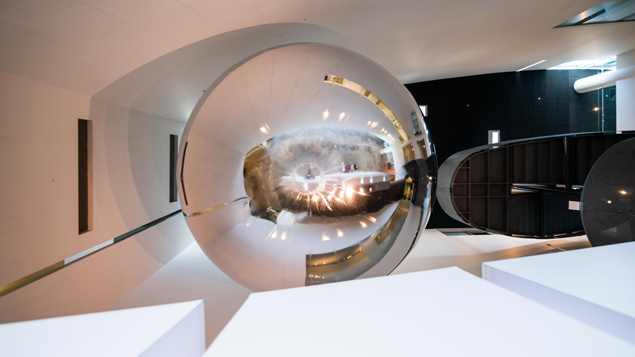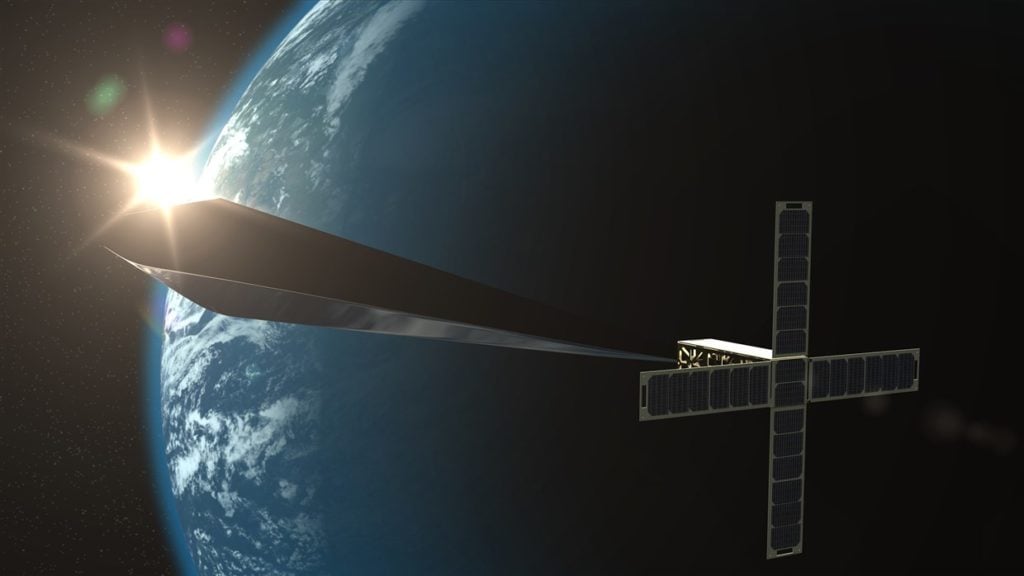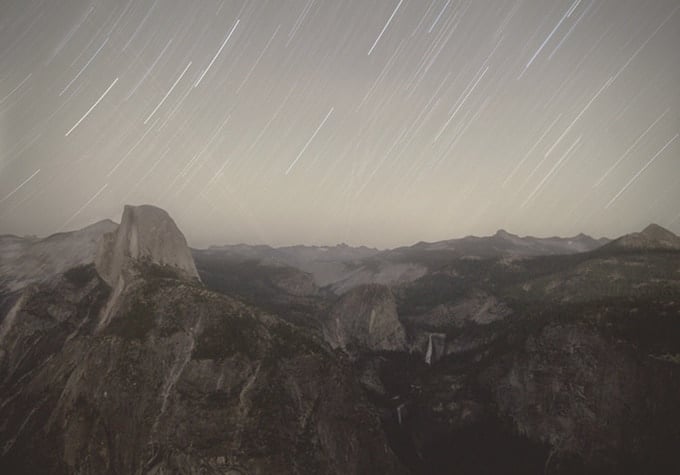Art World
Trevor Paglen Responds to Astronomers Who Criticize Space-Based Art—and Has a Few Pointed Questions for Them, Too
The MacArthur Genius winner says that his "Orbital Reflector" could draw attention to the skies and the science of space.

The MacArthur Genius winner says that his "Orbital Reflector" could draw attention to the skies and the science of space.

Sarah Cascone

Trevor Paglen has heard the concerns of astronomers who have criticized the concept of reflective artworks in space, and he’s highly skeptical.
As reported yesterday, the work in question is Orbital Reflector, described as a piece of “land art in the sky” and set to launch as part of his show at Reno’s Nevada Museum of Art. The website Gizmodo has taken up the cudgels against it, in a post titled “Hey Artists, Stop Putting Shiny Crap Into Space,” quoting an astrophysicist who compared the idea of orbital art to putting “a neon advertising billboard right outside your bedroom window.”
“I definitely understand how some people might feel vaguely morally offended by the project,” Paglen admitted in an email to artnet News.
Yet beyond a symbolic aversion, is there really any cause for concern? For those would still voice objections, the artist has a few questions.
“How—specifically—would Orbital Reflector interfere with the astronomer’s work?” Paglen wondered in the email. “Are they actually doing optical observations with telescopes? Are they worried about satellite moving through field of view of telescope? A ‘yes’ answer to this would be a little hard to believe to be honest—the image of an astronomer looking through a telescope to do ‘science’ is pretty anachronistic. It’s incredibly unlikely that Orbital Reflector would move through the field-of-view of a telescope right in the middle of an important observation and thereby ruin the observation.”

Trevor Paglen, Orbital Reflector, rendering. Courtesy of Trevor Paglen and Nevada Museum of Art.
Indeed, he stresses, not all astronomers are united against the project.
“In my experience, most astronomers have been really excited about the possibility of this project providing the opportunity to share the sense of wonder at looking at the sky,” said Paglen, noting that he worked closely with astronomers and scientists to develop Orbital Reflector. “If you want to track it, you learn something about how orbits and how the planet works.”
The artist also points out that Orbital Reflector is hardly unique in its visibility from earth. “Why is Orbital Reflector specifically more problematic than the hundreds of other satellites and rocket bodies launched each year?” Paglen asked by email. “For that matter, how is Orbital Reflector more disruptive than an airplane or a weather balloon?”

Trevor Paglen, Nevada Auriga. Photo courtesy of Altman Siegel Gallery and Metro Pictures.
The sculpture will also only be active for about three months, a very short orbital lifetime. If critics object to Orbital Reflector, Paglen reasoned in his email, “they must REALLY have a problem with military satellites, communications satellites, discarded rocket engines, and the like (especially the military ones whose orbits aren’t even published). I’m genuinely interested in this and would really love any constructive criticism of aspects of the project I may not have thought through.”
Still, the very fact of these extant satellites may actually be cause for critics’ objection to Orbital Reflector: Is it really wise to add to all of the man-made objects that already fill our night sky without a specific scientific or military goal for the project?
“Implicit in that question,” says Paglen, “is the idea that art is not a good thing and that artists should not be participating in this form of production. Why are we offended by a sculpture in space, but we’re not offending by nuclear missile targeting devices or mass surveillance devices, or satellites with nuclear engines that have a potential to fall to earth and scatter radioactive waste all over the place?”

Trevor Paglen, KEYHOLE IMPROVED CRYSTAL from Glacier Point (Optical Reconnaissance Satellite; USA 224), 2011. Photo courtesy of Altman Siegel Gallery and Metro Pictures.
“These are the typical uses of space, and somehow we’re not offended by that,” he added. “That’s something that I would question.”
Orbital Reflector may be nonfunctional, but that in and of itself is an important conceptual element to the artwork. The piece’s purely visual purpose, inviting people to look at the heavens and the stars above, stands in opposition to the way satellites have been employed since the launch of Sputnik 1 by the Soviet Union in 1957, the artist claims.
“For many years, I’ve done a project to track and photograph all of the hundreds of secret military satellites in orbit around the earth,” wrote Paglen. “Spending so much time thinking about military and commercial infrastructures, I just started to ask myself what spaceflight might look like if it were decoupled from the histories of nuclear war, nationalism, and global surveillance that characterize it’s core.”

Trevor Paglen, Nine Reconnaissance Satellites over the Sonora Pass, (2008). Photo courtesy of Altman Siegel Gallery and Metro Pictures.
Paglen was also inspired by Russian Suprematist painter Kazimir Malevich’s vision of a world orbited by artworks called “Sputniks.” Were more artists to join in Paglen’s (and Malevich’s) footsteps, it is in theory possible that orbital art could reach a critical mass that would have a discernible impact on scientific observation of space.
In fact, rocket startup Rocket Lab has already launched a similar project, a reflective disco ball of a satellite called the Humanity Star, in January. (In his email, Paglen called it “sort of a rip-off of Orbital Reflector by this wanna-be Elon Musk guy.”)
For now, however, two non-functional, sparkling beacons temporarily launched into orbit do not a trend make. Paglen also feels he is unlikely to spark a wave of copycat space sculptures, writing that “this is extremely logistically intensive project—it definitely isn’t something that an artist can just do in their studio.”

Trevor Paglen, Orbital Reflector, schematic drawing. Courtesy of Trevor Paglen and Nevada Museum of Art.
Even if the aggrieved astronomers’ concerns are valid, Paglen believes that Orbital Reflector will have a positive net effect on the field of astronomy. In his email, he cites “the pedagogical work we’re doing about astronomy as part of the overall program,” as well as “sky viewing parties that will bring people together to really look at the night sky.”
Indeed, Paglen argues, his project is also contributing to scientific discovery. “Because Orbital Reflector is a high-volume, low-mass object,” he explained, “it presents a fantastic and largely unique opportunity to study things like solar radiation pressure and the effects of space weather on satellites by tracking its rate of decay and any anomalies in its orbit compared to these factors.”
Balloon-like sculptures such as Orbital Reflector could ultimately even provide a possible solution to the growing problem of space debris, he thinks. Similar inflatable structures could theoretically be used like a parachute to help drag satellites that have outlived their lifespan back to earth. Without such an intervention, dead satellites could stay in orbits for tens or even hundreds of years.
“The military is already tracking almost 20,000 objects in space that is mostly debris,” Paglen added. “None of that debris is from artists.”
“Trevor Paglen: Orbital Reflector” is on view at the Nevada Museum of Art, 160 West Liberty Street, Reno, April 26, 2016–January 31, 2019.